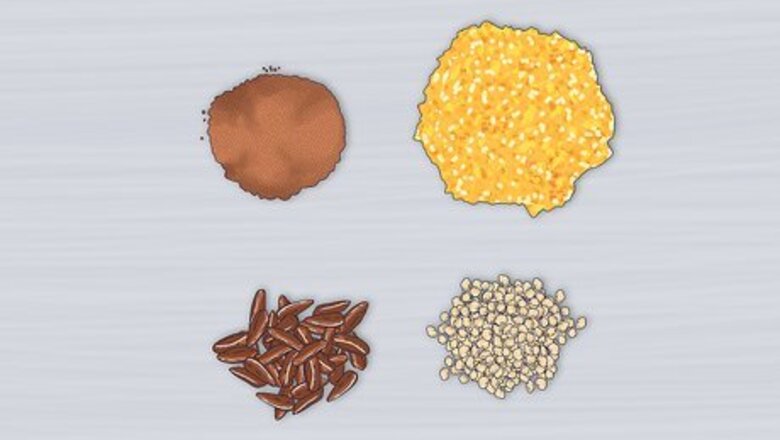
views
- Feed dwarf hamsters 1 tbsp (15 grams) of nutritionally balanced food, like commercial hamster pellets, each day.
- Enhance your dwarf hamster's diet with tiny servings of vitamin-packed fruits and veggies like slices of cucumbers and strawberries.
- Make sure your dwarf hamster gets 1 tbsp (15 grams) of protein a day in addition to commercial food mix. Offer a yummy treat like cottage cheese.
- Keep your dwarf hamster well hydrated with a hamster water bottle and avoid overfeeding them so they stay healthy.
Choosing the Right Food
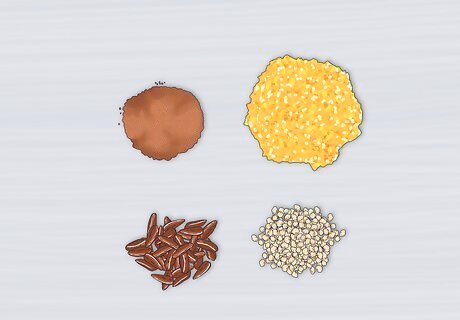
Feed your hamster a high variety food mix. This food mix should consist of fruit, vegetables, seeds, and a limited amount of pellets and insects. These provide your hamster with the right nutrition. You can buy a food mix or make your own. Making your own food mix is ideal that way you can ensure that your hamster is getting the nutrients they need. If you choose to buy commercial hamster food, read the nutrition facts and ingredients to determine if the food mix is high variety. If not, find a different food mix. Avoid mixes that have artificial dyes and/or artificial preservatives.
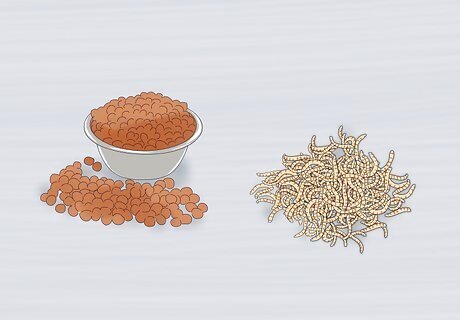
Choose food based off of your hamster’s individual needs. Each hamster has their own unique requirements, and there isn’t a single mix that will fit the nutritional needs of every single hamster. This is another reason why making your own food mix is sometimes preferred over buying an existing mix. This also applies to how much and how often you should feed your hamster. Different hamsters of different sizes will have different requirements. For instance, an incredibly overweight hamster should be fed a lot less than a hamster of a healthy weight. See a veterinarian if you are unsure of what your hamster needs.
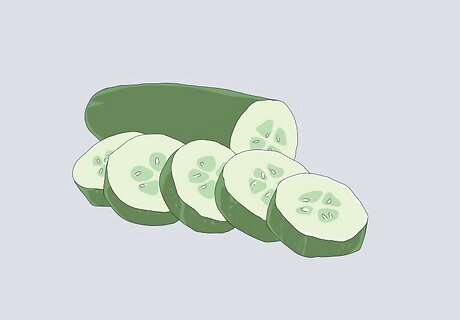
Offer your pet treats packed with nutrients and vitamins. Provide 1 tiny serving of a veggie, like a slice of cucumber, and a tiny amount of fruit as a treat, like 1 tip of a strawberry. Examples of produce that you can feed your dwarf hamster are asparagus, broccoli, bananas, and blueberries. Start by feeding your dwarf hamster one small piece of produce a week, then slowly move up to feeding them a small piece once a day. If your dwarf hamster develops diarrhea, stop feeding them produce. Wait for their diarrhea to resolve before trying again. Herbs, such as basil and coriander, are also great low-sugar treats for your dwarf hamster.
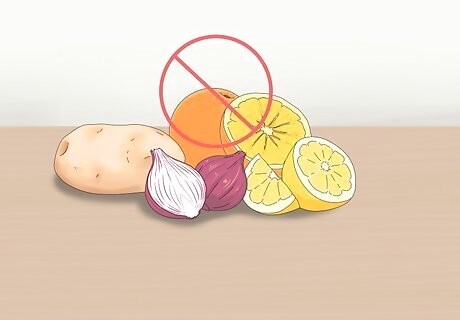
Avoid feeding your dwarf hamster any food that is dangerous for them. Don't feed dwarf hamsters plants that are toxic, including tomato leaves, raw potatoes, and onions. Avoid citrus fruits, like oranges and lemons because they're too acidic. To make sure you don't contribute to a diabetes risk, steer clear of fatty nuts, sugary fruits, salty snacks, sweets, or refined products. Avoid fruits with an extremely high water content, like watermelon. Bell peppers are too acidic for your dwarf hamster's digestive tract and can give them an upset stomach. Almonds contain cyanic acid, which can make your dwarf hamster very sick. Fruit seeds can be harmful to your dwarf hamster. If you would like to feed your dwarf hamster fruits that have seeds, like apples, peaches, or plums, make sure to remove the seeds first. Chocolate is extremely dangerous and can kill your dwarf hamster. Avoid it at all costs.
Feeding Your Hamster
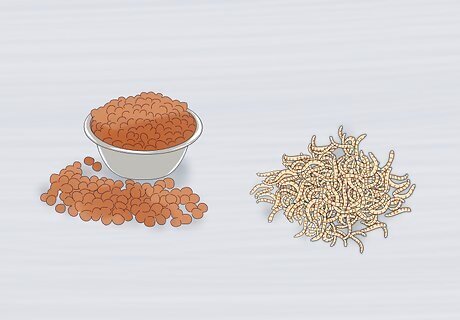
Make sure your little omnivore gets 1 tbsp (15 grams) of protein a day. Provide this essential nutrient in addition to their serving size of commercial food mix. There are several great protein sources from which you can choose. For example, raw and unsalted seeds, such as sunflower, flax, and sesame, are high in protein. Lentils are another good protein source. Dwarf hamsters also enjoy insects like grasshoppers, earthworms, and crickets, which are high in protein. Purchase insects from your local pet store since the ones you capture outside may have microorganisms that could make your dwarf hamster sick. Small amounts of dairy, like pea-sized amount of plain yogurt or cottage cheese, or a pinch of meat, like turkey or chicken, are also good protein sources. Grains like rice, nuts, and seeds provide a good amount of protein, too. Just give your pet 1 tsp (4.9 g) of these sources once every 2-3 days since they're high in calories.
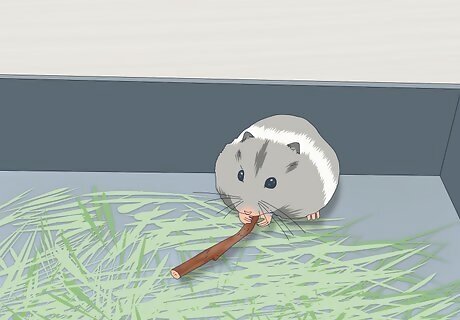
Boost your dwarf hamster's dental health with hard treats. Give your dwarf hamster 1 hard treat once a week. Hard treats help your dwarf hamster keep their incisors filed down, which is good for their overall dental hygiene. Let them gnaw on commercial hamster treats, small dog biscuits, or a small branch from a fruit tree. Your dwarf hamster can have soft treats, too. Examples of soft treats include 1/2 of a slice of whole wheat bread and scrambled eggs made out of 1/4 of an egg.
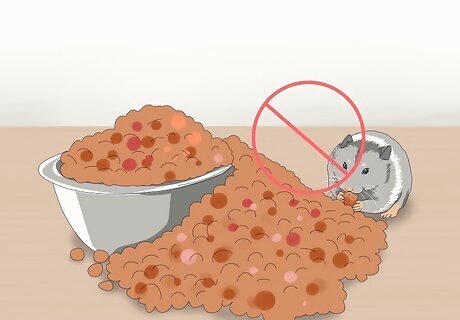
If you give them too much, they might get sick or gain weight. They will only need about 1 tbsp (15 grams) of hamster food each day, plus 1 tbsp (15 grams) of protein, and the occasional treat and fresh food. While this might look like a lot compared to these tiny creatures, it’s the perfect amount. Dwarf hamsters actually have very fast metabolisms and can eat the same amount as their larger cousins. If you’ve already given them their daily allotment of food, don’t refill their empty bowl. Hamsters have cheek pouches in which they will stuff their food to save for later. They also have a habit of storing their food under their cage bedding.
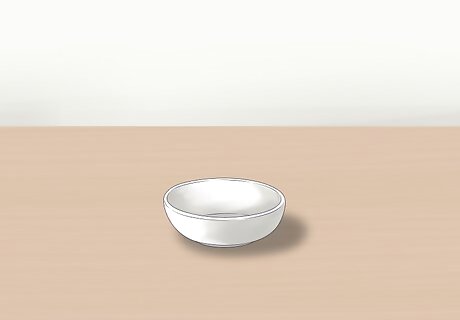
Put your dwarf hamster's food in a small ceramic bowl. Give your pet a bowl that's durable and holds the right amount of food. Small ceramic bowls are chew-resistant, which is a huge benefit over plastic bowls, which may get scratches from chewing that lead to bacterial growth. A ceramic bowl will decrease the likelihood of bacteria growing in or on the bowl. Ceramic bowls are also very sturdy, which makes them difficult to overturn, unlike plastic food bowls. Place the food bowl as far away as possible from your hamster’s designated ‘bathroom," the spot where they've designed to go potty. Clean the food bowl once a week when you clean your dwarf hamster’s cage.
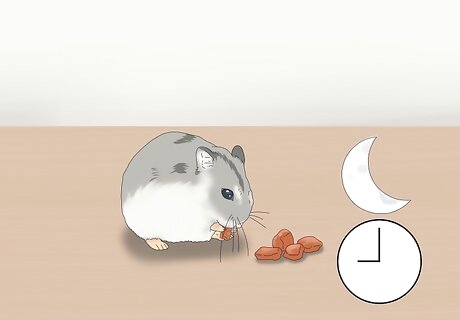
Feed your pet at the same time each day. Train your dwarf hamster to know when to expect their meals. One benefit to feeding them in the evening is that they will already be awake since they’re nocturnal animals. On the other hand, feeding them in the morning means that food will still be there when they wake up from naps throughout the day. Whichever time of day you choose to feed your dwarf hamster, remain consistent with feeding them at the same time. Remember that dwarf hamsters have a very high metabolism, so they will need access to food at all times.
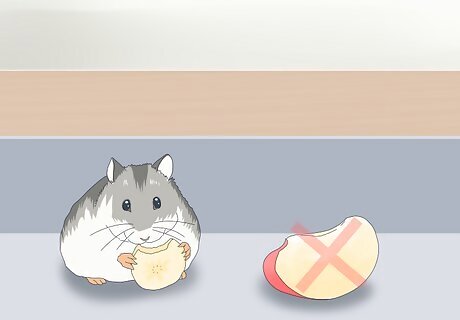
Keep track of which foods your dwarf hamster prefers. Your dwarf hamster's diet should contain a variety of foods so that they receive all of the nutrients they need in the right amounts. However, your dwarf hamster may not like everything that you feed them. If you notice that they're consistently avoiding a certain food, switch it out for something else. For example, if you notice that your dwarf hamster doesn’t like one kind of fruit, like an apple, replace it with another fruit, like a banana. Keeping a variety of foods will allow you to easily switch out one food for another. Stop feeding them food that makes them sick ASAP. For example, avoid giving them even tiny amounts of watermelon if it gives them diarrhea.
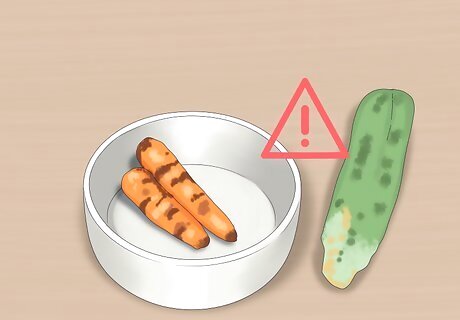
Remove any uneaten food. Discard food before it gets rotten so your dwarf hamster doesn't get sick. This is especially important for fruits and vegetables, since they can get spoiled and moldy really quickly. Feed only the amount of fruit that your dwarf hamster can eat in a day. A good rule of thumb is to check how much they regularly leave behind and how many pieces of fruit seem to satisfy them.
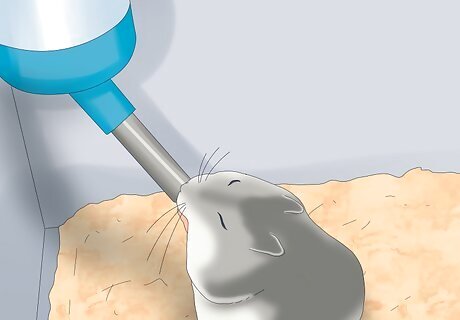
Give your dwarf hamster fresh water. Keep your critter well hydrated by providing water all throughout the day. Buy a hamster water bottle with a stem and ball bearing from your local pet store. The ball regulates how much water comes out each time the hamster takes a drink so they get an appropriate amount. Do not give your hamster a water bowl or dish since these usually lead to watery messes that grow mold. Position the bottle inside the cage so that it’s out of direct sunlight. Direct sunlight can cause algae to form inside the bottle, which can make your hamster sick. Secure the water bottle inside of the cage with two small clips. If these clips didn’t already come with the bottle, pick up a couple at your local pet store.













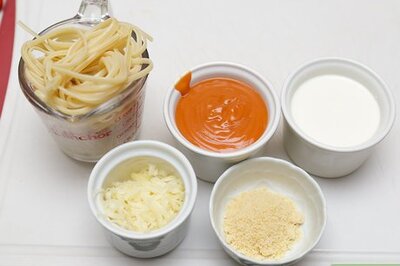



Comments
0 comment